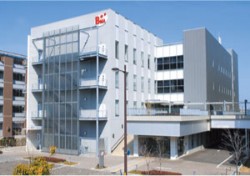Wnt/β-catenin Signaling
— More evidence that enhancing the β-catenin signaling pathway in dermal papilla cells allows faster and denser hair growth.
— New findings from a Stanford University (US) and A*STAR (Singapore)’s Institute of Medical Biology collaboration: Wnt/β-catenin signalling plays a critical role in hair follicle stem cell maintenance. Interesting quote:
“Compounds, particularly those which have already been established to be Wnt activators, can now be tested against cultured HFSCs to see if they do stimulate hair regrowth. The scientific community may also be able to culture HFSCs more efficiently by tweaking Wnt signalling to the optimal levels.”
Other Hair News Updates
— Histogen gets $6 million funding from China and also targets the Chinese market. Also, Hairlosstalk is interviewing CEO Dr. Gail Naughton this week. Unfortunately the questions are already finalized, but its still worth a gander through this thread.
— Kyocera updated its article on the biggest news of this year in the hair loss world. They plan to conduct clinical research in Japanese fiscal year 2019 and put the technology into “practical use” in 2020. Interesting quote:
“While various methods are under evaluation, Kyocera’s piezoelectric technology is of particular interest as a means of discharging small amounts of viscid cells in a precise manner during the cell processing process.”
— PGD2 inhibitor Fevipiprant could be a miracle treatment for asthma. I am still hopeful that Setipiprant will be better than expected when it comes to treating hair loss. Worth listening to Kythera CEO’s interview here if you haven’t already.
— New article that covers Dr. Christiano’s company Rapunzel as well as other relevant subjects including Samumed, Vixen/Aclaris and Dr. Joseph Greco.
— New study from China: “Hair follicle and sebaceous gland “de novo” regeneration with cultured epidermal stem cells and skin-derived precursors.”
— Joe Tillman discusses his Dr. Cooley PRP treatment results. I have covered platelet-rich plasma for hair growth many times on this blog.
— Healeon Medical is starting a new clinical trial in Honduras that will “evaluate the safety and efficacy of the use of a biocellular mixture of emulsified adipose-derived tissue stromal vascular fraction (AD-tSVF) and high density platelet-rich plasma concentrate (HD-PRP) as compared with adipose-derived cell-enriched SVF (AD-cSVF) + AD-tSVF and HD-PRP concentrates in treatment of androgenetic alopecia (AGA) and female pattern hair loss (FPHL).”
— Dr. Jeffrey Epstein is conducting the “first ever FDA-approved study in the US on the use of fat-derived stems cell for the treatment of hair loss in men and women.” If you are near Miami, perhaps worth a visit.
— He says that black guys do not always pull off the bald look. I still think he pulls it off.
— UK celebrity funnyman divorcee gets a hair transplant to prepare for online dating so as to not look like a thug.
And now on to medical items of interest:
— Last year I discussed the inspirational Zion Harvey after he got a double hand transplant. He had lost both his legs, both his hands and his kidney to a childhood infection. One year after his double hand transplant surgery, here is the result.
— Chinese scientists to pioneer first human CRISPR trial.
— “Bio is the new digital.” Great article from Taiwan that is a must read after translation. Boston is to biotech what Silicon Valley is to information technology. In the hair loss world, it seems like New York and San Diego are far more important than Boston,
— Two stories on aging in the Economist in the past week. Here and here.
— Excellent article on human enhancement.
— At least androgens have some benefits such as telomere length extension.

